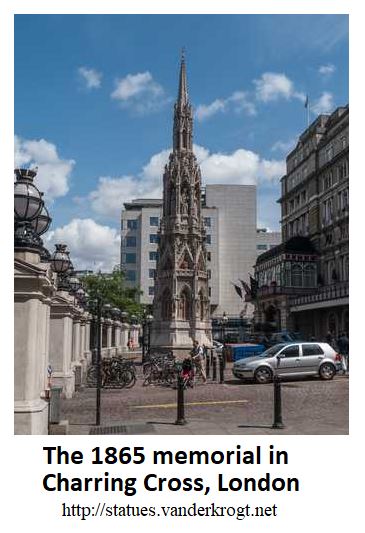ELEANOR CROSSES
were a series of twelve extravagantly decorated stone monuments topped with
crosses and erected in a line down part of the east of England. They were built
at the instigation of Edward I between 1291 and about 1295 in memory of
his beloved late wife Eleanor of Castile. The King and Queen had been
married for 36 years and she stayed by the King’s side through his many travels
including on a Crusade when he was wounded at Acre. She had died in Harby, a
village near Lincoln in 1290. The crosses, erected in her memory, marked the
nightly resting-places along the route taken when her body was transported to
Westminster Abbey in London. The
crosses stood at Lincoln, Grantham and Stamford, all in Lincolnshire;
Geddington and Hardingstone in Northamptonshire; Stony Stratford in
Buckinghamshire; Woburn and Dunstable in Bedfordshire; St Albans and Waltham
(now known as Waltham Cross) in Hertfordshire; Cheapside in London; and Charing
(now Charing Cross) in Westminster. Three
of those medieval monuments – those at Geddington, Hardingstone and Waltham
Cross – survive more or less intact; but the other nine, other than a few
fragments, are lost. The largest and most ornate of the twelve was the Charing
Cross. Several memorials and elaborated reproductions of the crosses have been
erected including, the Queen Eleanor Memorial Cross at Charing Cross Station built
in 1865.

I'm listening to Nina Simone's stunning, soulful version of He Ain't Coming No More.







